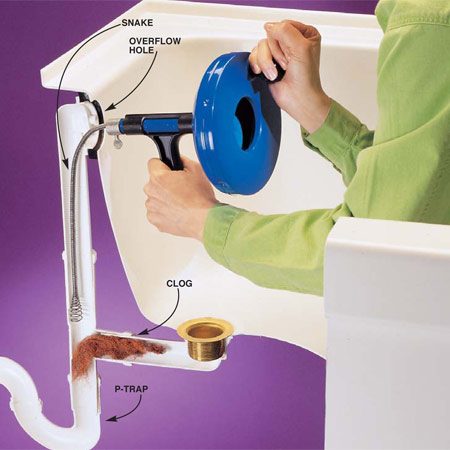Who to Call for Help Cleaning and Clearing Drains and for Plumbing Repair
By Andam Persand
Many things can go wrong with plumbing in the home or apartment. Knowing which professional to call will save the homeowner or renter both time and money. Should a drain cleaning rooter service be called, or is a fully licensed and bonded plumber required? Can the neighborhood handyman clear up the problem or could the homeowner even do it themselves?
The first concern should always be safety and following the law. If construction or severe weather has damaged any water mains, wastewater lines, natural gas pipes, or power lines you should call 911 to prevent further property damage and personal injury. Other utility conduits, such as cable television lines, do not require calling 911-in these cases consult a utility bill or the telephone book for the telephone number to call.
When looking for a local emergency, utility, or business phone number online, include the zip code in your search query. Most search engines will provide relevant local results when a zip code is included.
If flooding has caused a standing water situation, there is a risk of property damage and a potential health hazard. Do not work with electricity or non-approved electrical devices near standing water. Do not add caustic liquid drain cleaner to standing water in sinks, tubs, toilets, or on the floor. Liquid drain cleaner will make the situation more dangerous to property and person. Wikipedia says acidic and caustic liquid drain cleaners are "among the most hazardous household products available to the public." Standing water must be removed by pump, bailing, or mopping up before the problem can be further addressed safely.
If a sewer backup, storm drain malfunction, or severe weather has caused major flooding, extreme caution must be exercised. Flood cleanup is beyond the scope of this article, but the North Dakota Department of Health has an excellent collection of flood disaster cleanup, health, and safety information.
Minor flooding can be cleared by the homeowner or a qualified professional. When a household drain has backed up or is performing poorly with slow flow, a drain cleaning rooter service will be able to diagnose and remedy the trouble. Drain cleaning business provide a variety of different services for restoring flow to the different household drains and for addressing the many different problems that can arise.
A licensed plumber or fully bonded contractor should be consulted whenever any work is done that replaces or adds new plumbing to existing structures. Also call a plumber for replacing or adding showers, bathtubs, dishwashers, and kitchen sinks. Some home plumbing tasks, such as replacing a toilet or bathroom sink are straightforward enough to be done by the homeowner on the weekend, but these larger projects are more complex and for best results should be done by a professional. Many localities require that this type of work be done by licensed professionals.
Other drain problems can be handled by drain cleaning services or a well-equipped homeowner. Do not attempt to accomplish plumbing tasks without the proper tools. Most pipes and plumbing are easily damaged irreparably, including scratching chrome and chipping or cracking porcelain. Call a drain service before attempting something that could cause permanent damage.
Drain cleaning services have a number of different tools and techniques for busting clogs, clearing pipes, and restoring flow. Most will arrive equipped with both handheld and motorized drain augers. Many can also use stiff but flexible hooked rods for reaming and scraping out pipes. One very effective service is drain and sewer jetting, where the professional sends a hose down the lines equipped with a special nozzle to spray water at extreme pressure, rinsing away and flushing down the pipes everything from grease and oil to tree roots and mineral build up. Modern drain service businesses will be equipped for video inspection of the lines, sending a camera down the insides of pipes to find and identify the issue.
When a drain is recurrently becoming clogged, when multiple drains in a home are showing symptoms, or when the clog or blockage has formed deep in the pipes, then a drain service should be called, for example, a local rooter or drain cleaning business. For work on pipes supplying water to the home or building, or for major repair or renovation, get a plumber to do the job right. For a one time clog or plugged drain, consult a handyman or purchase a plunger, closet auger, or handheld drain auger for the home.


